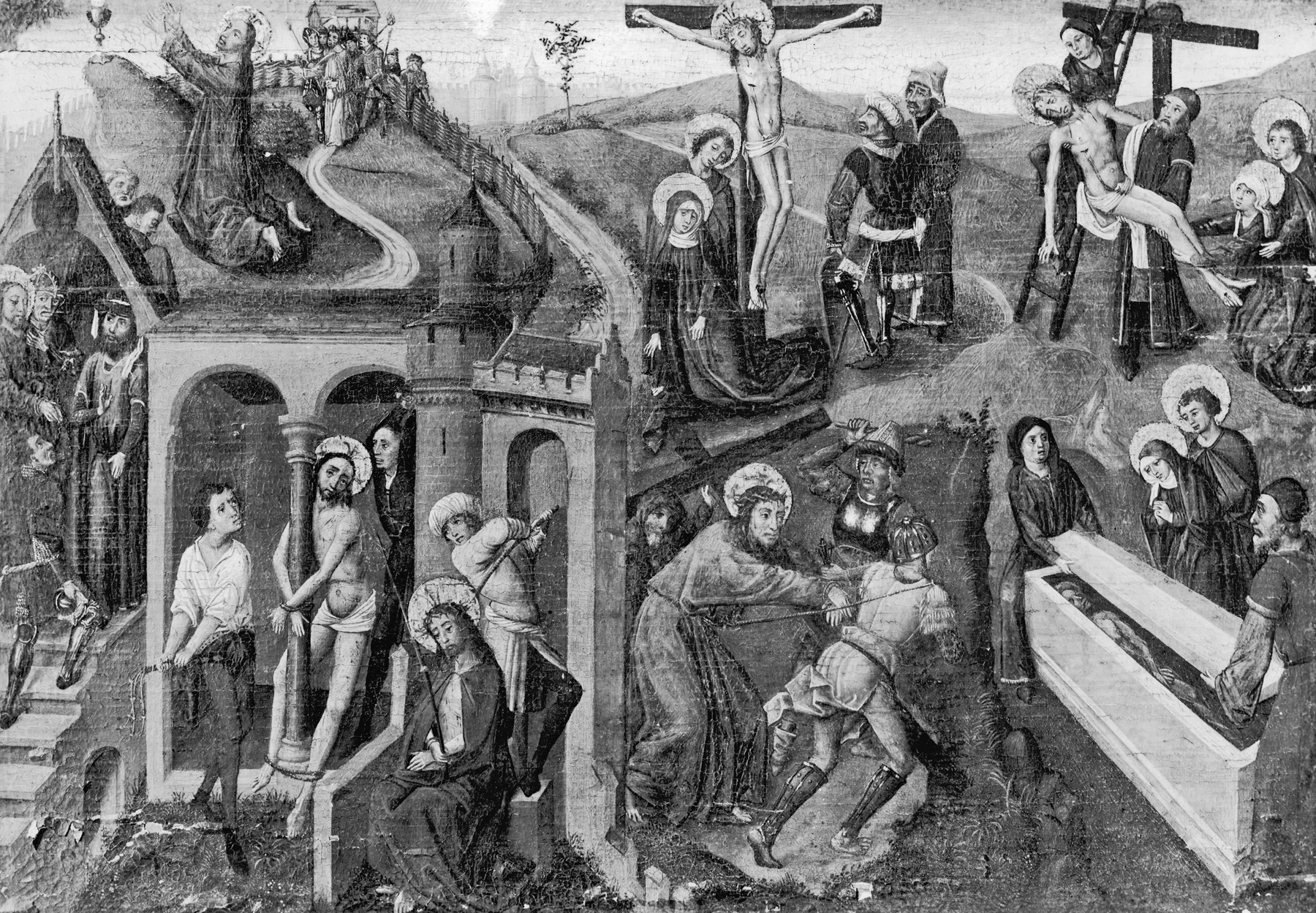Passion of Christ
The story threads its way from the upper left rear to the lower right front: Christ in the Garden of Gethsemane and then taken into custody; Christ before Pilate; the Flagellation; the Mocking of Christ; Christ Carrying the Cross on the road to Calvary; the Crucifixion; the Deposition (the dead Christ removed down from the cross); and the Entombment.
The use of simultaneous narrative - showing events that happened in sequence all together within one continuous space - is an ingenious device for conveying the inevitable flow of one event into the next. This format was developed around 1470 in Bruges for paintings meant for the home. The use of stage-like settings and dramatic gesture owes much to contemporary religious theater.
Provenance
Provenance (from the French provenir, 'to come from/forth') is the chronology of the ownership, custody, or location of a historical object. Learn more about provenance at the Walters.
Henry Walters, Baltimore, [date of acquisition unknown] by purchase; Walters Art Museum, 1931, by bequest.
Conservation
| Date | Description | Narrative |
|---|---|---|
| 12/22/1975 | Examination | examined for catalogue |
Geographies
Germany, Westphalia
(Place of Origin)
Belgium, Bruges (Place of Origin)
Measurements
12 13/16 x 17 11/16 in. (32.5 x 44.9 cm)
Credit Line
Acquired by Henry Walters
Location in Museum
Centre Street: Third Floor: 15th-Century Art of Northern Europe
Accession Number
In libraries, galleries, museums, and archives, an accession number is a unique identifier assigned to each object in the collection.
In libraries, galleries, museums, and archives, an accession number is a unique identifier assigned to each object in the collection.
37.776






